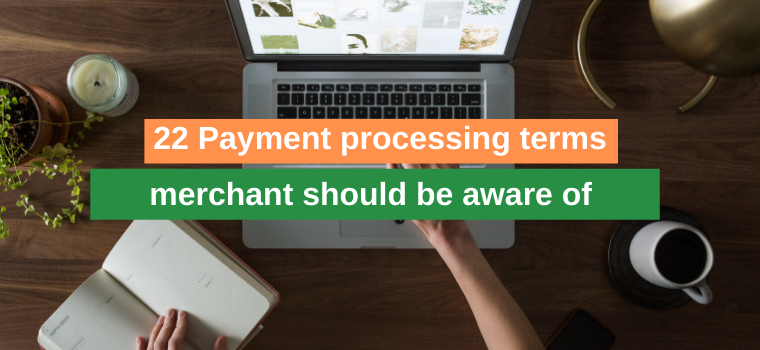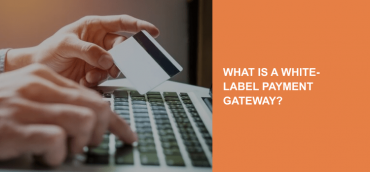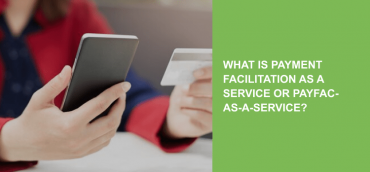Top payment processing terms
The area of payment processing covers a much broader field of interest than an ordinary individual may think. If you are only at the starting process of business, you may face many specific definitions. This article will help you to get to know some of them.
1. Acquiring banks
The acquiring bank is an empowered institution that provides the initial processing of transactions all card transactions: transfer to the current accounts of merchants funds for goods and services, receiving, sorting and sending receipts, distribution of stop-lists.
2. API
API (application programming interface) is a bundle of predefined classes, functions, procedures, structures, and constants. The application itself provides all this information. The purpose of the information provided is the use of this data when interacting with external programs.
3. Bank Identification Number
Bank Identification Number is a part of the number located on a plastic card. It is useful for identification the bank within the framework of the card payment system during authorization, processing, and clearing.
4. Business Identifier Code (BIC)
Business Identifier Code is an alphanumeric identification code assigned to financial institutions involved in international commercial transactions.
5. Card authorization
Card authorization is the process of holding the credit or debit card transaction as unavailable until the transaction is done.
6. Chargeback
A chargeback is a process of challenging a bank operation on a card made by a customer. Frequently, the cardholder initiates the procedure. But in some cases, the bank may be the initiator.
7. Chargeback Reason Code
Chargeback Reason Code helps payment institutions to indicate the reason and the type of chargeback.
8. Dynamic 3D Secure
3D Secure – technology for securing payments via the Internet. When making a payment online, the user receives an SMS message with a unique one-time password to confirm the operation. 3D Secure was developed to minimize the risk of online payment fraud.
9. Electronic Funds Transfer (EFT)
The electronic funds’ transfer is an automation method used in the financial world when all money transfer activities are provided online.
10. Fraud Prevention System
Fraud Prevention System is a service for detecting fraudulent schemes, such as dishonest receipt of compensations, which are contrary to the interests of the client.
11. Global Acquiring Network
An acquiring bank is a bank that provides acquiring services to a merchant and is authorized to accept payments with all-cash settlement transactions.
12. High-Risk Business
Business is considered to be high-risk if:
- Your service or product has a more extended period of chargeback liability.
- You operate in an industry that has a high-chargeback history.
- The account has a “reputation” risk, for example, in the adult industry, and others.
13. ICO (Initial Coin Offering)
ICO, being a form of attracting investments for cryptocurrency projects, does not have any regulatory basis. It means that the initiator of the initial coin offering can be any legal entity or individual.
14. International Bank Account Number (IBAN)
IBAN (International bank account number) — international bank account number. Used in international settlements. Assigned to ISO 13616.
15. Issuer/Issuing Bank
Issuing bank – a bank issuing banknotes or securities and payment and settlement documents. Bank cards issued by the bank throughout the entire validity period remain the property of the issuing bank, and the cardholder receives it only for use.
16. Know Your Customer (KYC)
KYC essence boils down to the need for a potential client of a financial organization to provide a package of documents containing regulated information about his personality. The nature of the forthcoming procedure determines its composition.
17. Mail Order/Telephone Order (MOTO)
MO/TO – type of payment transactions for goods and services with payment cards. MO/TO operations differ from the usual ones in that its holder communicates the details of the payment card required for the preparation of the corresponding settlement document by mail, telephone, fax, or other communication.
18. MasterCard SecureCode
Mastercard SecureCode is a simple and secure way to pay for purchases in online stores using Mastercard cards, which is implemented by sending a one-time digit code to a mobile phone of the cardholder.
19. Merchant Category Code (MCC)
MCC (Merchant Category Code) – a four-digit number that indicates the type of activity of the company for non-cash payment of goods and services by bank cards.
20. Merchant Identification Number (MID)
A Merchant Identification Number (MID) is a unique number or code provided to merchants by their payment processor. MID identifies the merchant when making a transaction with its payment processor and other parties involved.
21. Payment Card Industry Data Security Standard (PCI DSS)
Payment Card Industry Data Security Standard (PCI DSS) – these are 12 requirements that describe a set of measures that are mandatory to ensure the maximum level of security of data on cardholders
22. Smart Routing
Smart routing allows you to configure routing through various channels, applying the rules in real-time – controlling the results, and adapting possible scenarios to the needs of the business.
Finally, these are all the terms you need to know for starters. However, be aware of the latest trends in payment processing by studying our blog.





